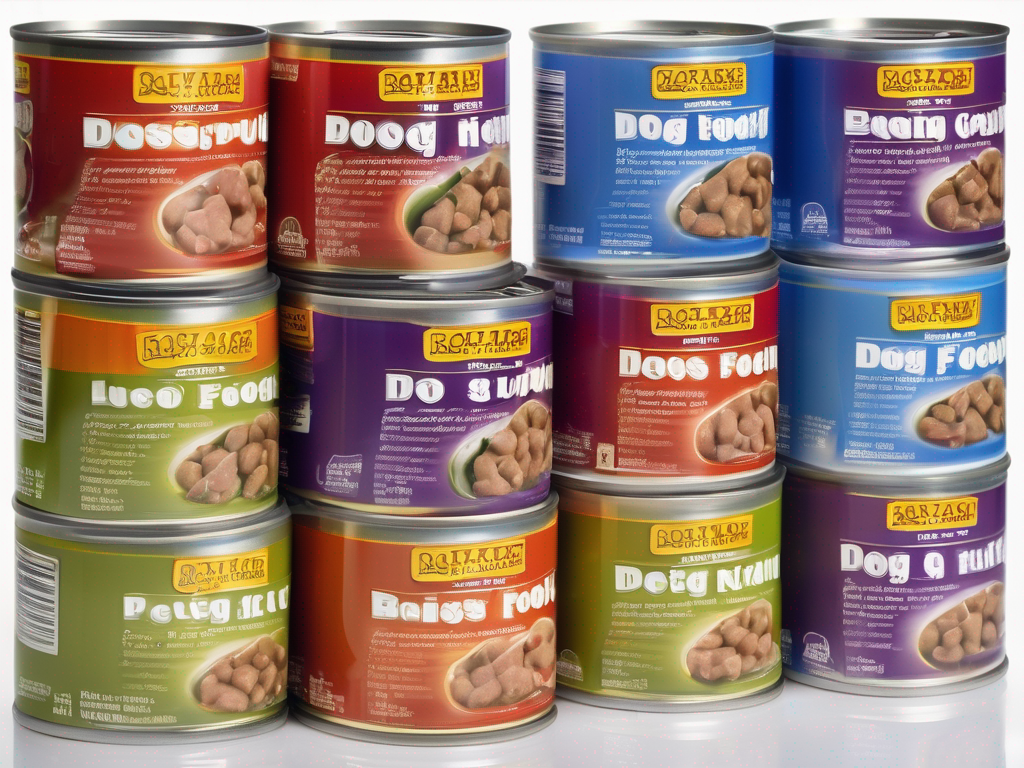
Is Your Canned Dog Food Still Safe to Feed? How to Tell if it has Gone Bad
Get Your Free Food Safety Cheat Sheet
30 most common foods with instant answers. Print it and stick it on your fridge—completely free!
Is Your Canned Dog Food Still Safe to Feed? How to Tell if it has Gone Bad
Canned dog food is a convenient and popular choice for pet owners, offering a long shelf life and easy storage. However, just like any other food product, canned dog food can go bad over time. It's essential to know how to spot the signs of spoilage to ensure the safety and well-being of your furry friend. In this comprehensive guide, we'll discuss how you can determine if your canned dog food has gone bad and provide you with practical tips for proper storage and handling. (Canned dog food)
Understanding the Shelf Life of Canned Dog Food
Canned dog food typically has a long shelf life, thanks to the canning process that helps preserve the contents. However, it's crucial to be aware of the expiration date printed on the can. While canned dog food can still be safe to consume after the expiration date, it's best to adhere to it for optimal quality and safety.
Signs Your Canned Dog Food May Have Gone Bad
Here are some common indicators that your canned dog food may have spoiled:
-
Unusual Appearance: Check for any changes in color, texture, or consistency. Spoiled canned dog food may appear discolored or have a strange texture, such as being unusually watery or thick.
-
Foul Smell: A strong, unpleasant odor emanating from the can is a clear sign that the food has gone bad. Fresh canned dog food should have a mild, meaty aroma.
-
Swollen or Damaged Cans: Do not feed your dog food from cans that are bulging, dented, or leaking. These can be signs of bacterial contamination and potential spoilage.
-
Mold Growth: If you notice any mold growing on the surface of the food or inside the can, discard it immediately. Mold can produce toxins harmful to your dog.
Tips for Properly Storing Canned Dog Food
To ensure the longevity and freshness of your canned dog food, follow these storage tips:
- Cool, Dry Place: Store unopened cans in a cool, dry place away from direct sunlight and heat sources.
- Refrigeration: Once opened, store any unused portions in the refrigerator and use them within a few days.
- Sealed Containers: Transfer any leftover canned food to a sealed container to maintain freshness and prevent contamination.
- Avoid Freezing: While canned dog food can withstand freezing temperatures, it can alter the texture and taste of the food. It's best to store it at room temperature or in the refrigerator.
The Importance of Proper Handling and Feeding Practices
In addition to proper storage, how you handle and feed your dog's canned food plays a significant role in ensuring its safety:
Handling Tips
- Wash Hands: Always wash your hands before and after handling canned dog food to prevent cross-contamination.
- Use Clean Utensils: Use clean utensils and bowls when serving canned dog food to your pet.
- Avoid Mixing Old and New: Do not mix old and new batches of canned dog food, as this can introduce bacteria and compromise freshness.
Feeding Practices
- Monitor Portions: Feed your dog appropriate portion sizes to prevent food waste and minimize the risk of contamination.
- Observe Behavior: Monitor your dog's eating habits and behavior when consuming canned food. Any signs of illness or discomfort should prompt a visit to the vet.
Conclusion
Ensuring the safety and quality of your canned dog food is essential for your pet's health and well-being. By being vigilant and attentive to the signs of spoilage, practicing proper storage and handling techniques, and monitoring your dog's feeding habits, you can provide them with nutritious and safe meals. Remember, when in doubt, it's always better to err on the side of caution and discard any canned dog food that shows signs of spoilage. Your furry friend will thank you for it with wagging tails and happy barks! (Canned dog food)
Authoritative Food Safety References
These agencies and university labs inform every tip and health precaution we publish.
USDA FoodKeeper – Cold Storage Guidelines
Official refrigerator, freezer, and pantry timelines maintained by the U.S. Department of Agriculture.
Visit USDA FoodKeeperFDA Produce Safety Rule & Grower Guidance
Field-to-fridge handling practices that prevent contamination of fruits, vegetables, and leafy greens.
Visit FDA Produce SafetyCDC Foodborne Illness Prevention Hub
Surveillance-backed guidance on pathogens, symptoms, and steps to reduce foodborne illness risk.
Visit CDC Food SafetyUC Davis Postharvest Technology Center
University research detailing optimal storage atmospheres for produce after harvest.
Visit UC Davis PostharvestPenn State Extension – Home Food Preservation & Safety
Peer-reviewed extension bulletins on safe canning, chilling, and reheating practices.
Visit Penn State ExtensionGet Your Free Food Safety Cheat Sheet
30 most common foods with instant answers. Print it and stick it on your fridge—completely free! Want more? Upgrade to the complete guide with 70+ foods.
Scan your food directly and get instant safety info using our AI-powered camera feature.